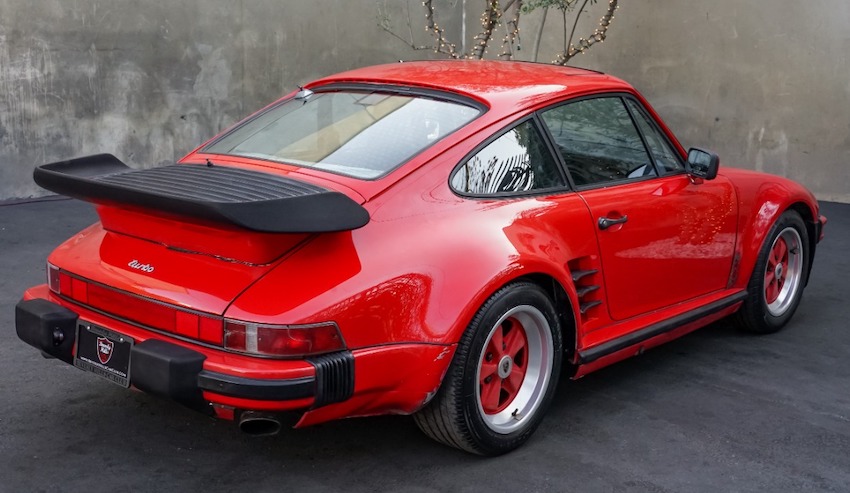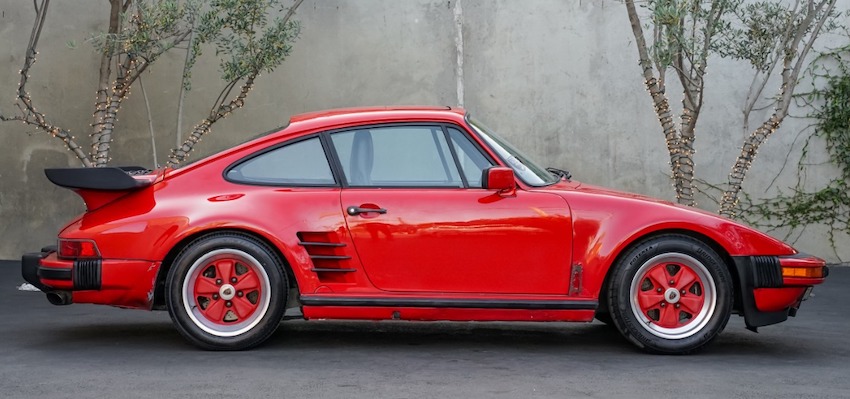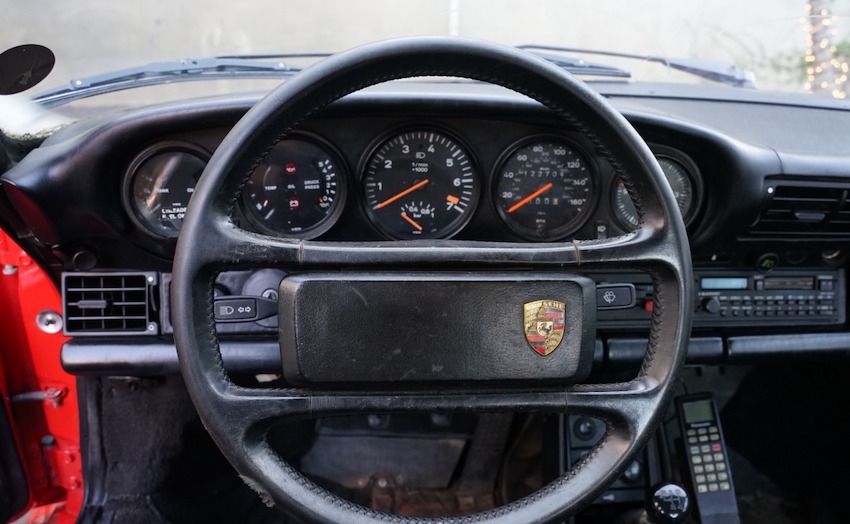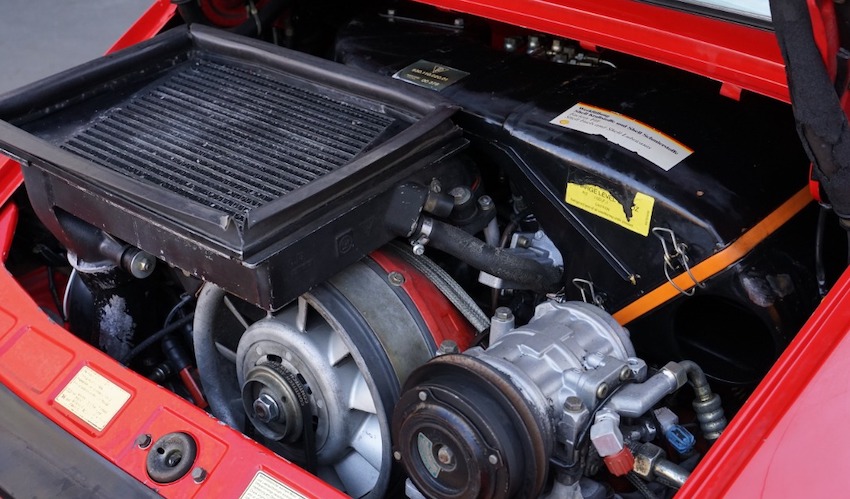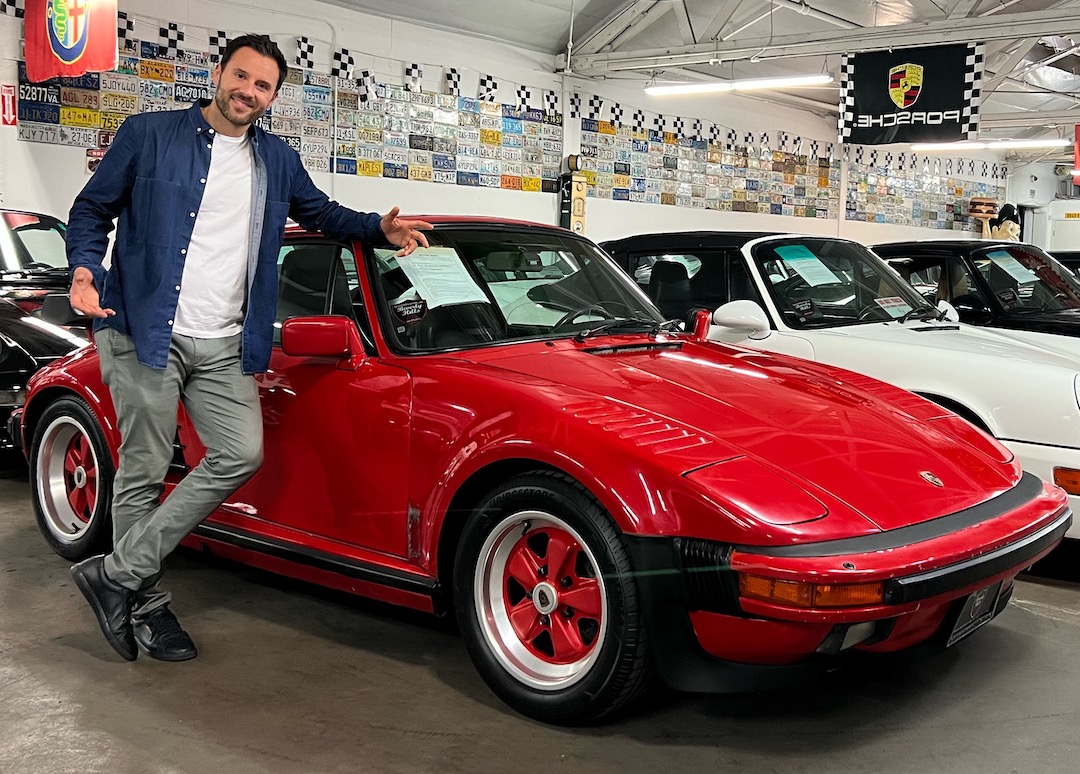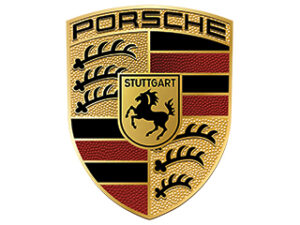Car Tales: Slant Nose! A Flachbau Porsche 930 Turbo
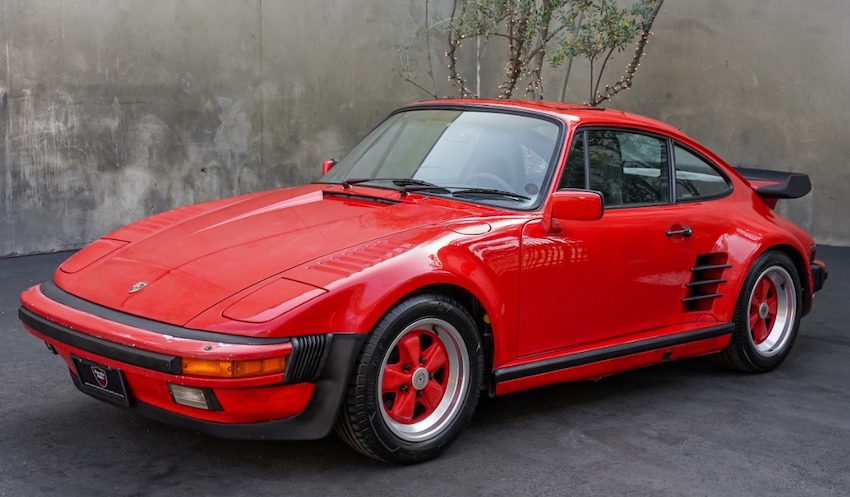
‘In total 948 Porsche 930 Flachbau cars were built, making the Flachbau 930 one of the most rare and unique Porsche 911 sports cars to date.
‘And Porscheheads adore the Slant Nose Porsche. Celebrity actor Matt LeBlanc of Friends and – maybe even more relevant – co-host of the Top Gear motoring show for three years is an owner of a 1984 model.
‘You could justifiably claim that the Porsche 911 Turbo is universally regarded as one of the 1980s’ most definitive motoring archetypes. But with its sexily sloping front, flip-up headlights, wide body and whale tail, the Porsche Slant Nose is even more of a specific design of its age.
‘Even more quintessential a 1980s’ look than that of the Lamborghini Countach and Ferrari Testarossa. And it oozes real racing pedigree: a great car to look at, let alone to drive.
‘But there was a paradox in this new design: the protruding headlights of the original 911 had been one of the most distinctive design features in motoring history. How could Porsche change a design so synonymous with the 911?
‘Well, this is why: for ten years, Porsche had raced 911s with noses that had been flattened for aerodynamic purposes. Surely then, when it came to a fast road-going 911, it made sense to replicate these race-bred design tweaks?
‘At the moment at Beverly Hills Car Club we have just such a high-end automobile, a 1988 Porsche 911 Turbo M505 Slant Nose (#286 out of 701) featured with matching numbers and is available in its factory color code #80k India Red with a black interior. The vehicle comes with a clean Carfax and is equipped with a 4-speed manual transmission, Flat 6 cylinder 3.3-liter engine, air conditioning, power windows, sunroof, 4-wheel disc brakes, factory slant nose body option, limited-slip differential, Fuchs wheels, air compressor, and a spare tire. Both the color code and options sticker are still in place under the hood. Also included is the original warranty/maintenance booklet. This is an extremely desirable limited production Turbo M505 Slant Nose that is mechanically sound.
‘In celebration of its success in the late 1970s at the Le Mans 24-hour race with the 935 Slope Nose look 911 silhouette racecars, Porsche had permitted discriminating customers to order street versions of the models which were called ‘Flachbau’. The story goes that a Porsche enthusiast and racing sponsor had asked the company’s Special Wishes department for a 935 racecar-inspired 930, which the Porsche factory kindly granted. The finished one-off was a hit, and customers clamored for a similar ‘street 935’ factory model.
‘This new look almost immediately became hugely popular. From 1981 to 1986 Porsche took Flachbau orders under their ‘sonderwunschen’ (special order) program, later called their Exclusive Program. The work was performed off-site at the company’s Werke 1 facility in Zuffenhausen.
‘But such was the demand, especially early on, that Porsche wasn’t equipped to build all the cars requested. As a result, Porsche would sell the parts to the customer and allow Porsche dealers to install them.
‘The M505 models were the first Slant Nose version cars to be officially imported to the US. These third generation cars were manufactured alongside standard 930 models on the main production line in Zuffenhausen. All cars were produced with pressed front wings/fenders that included the air-intake ducts above the pop-up lamps. The cars were then transferred to the Restoration and Repair Department in Werks 1 for finishing.
‘M505 models had the standard 930 front valance and standard 930 3.3 Turbo motor with catalytic converter. The low mounted centrally positioned oil cooler of the M506 models was not permitted in certain US states, so the oil cooler was instead mounted in the right rear wheel arch behind the air-intake vent.
‘Some of the M505 cars were produced by Alan Johnson Racing from factory-supplied kits in the US. Records show delivery of 609 US specification cars from Stuttgart, with the other 21 cars presumably built from the factory kits.
‘The M506 models all had the front mounted oil cooler and deeper air dam. Most of these cars were delivered with the 930/66 Turbo S kit offering 330bhp. UK market cars all had the 330bhp kit and interiors with Special Wishes centre consoles. Some cars have the Hella front side lamps as required in particular markets.
‘But none of this came cheap. Option packages M505 and M506 started at around $29,000, adding on nearly half the standard Turbo’s asking price. The cost reflected laborious production as, for example, the fenders were cut and reshaped by hand at the factory.
‘Yet you were buying an absolute icon, a true symbol of the age.
-Alex Manos, Owner

Get Started!
Welcome!
join our inventory newsletter
Sign-up for our e-mail alerts
join our newsletter
Sign-up for our e-mail alerts
Learn More
or
we buy classic cars
Looking to sell yours?
Contact us
Sell us your car
Pick up from any USA location - Any condition - Top $$$ Paid




